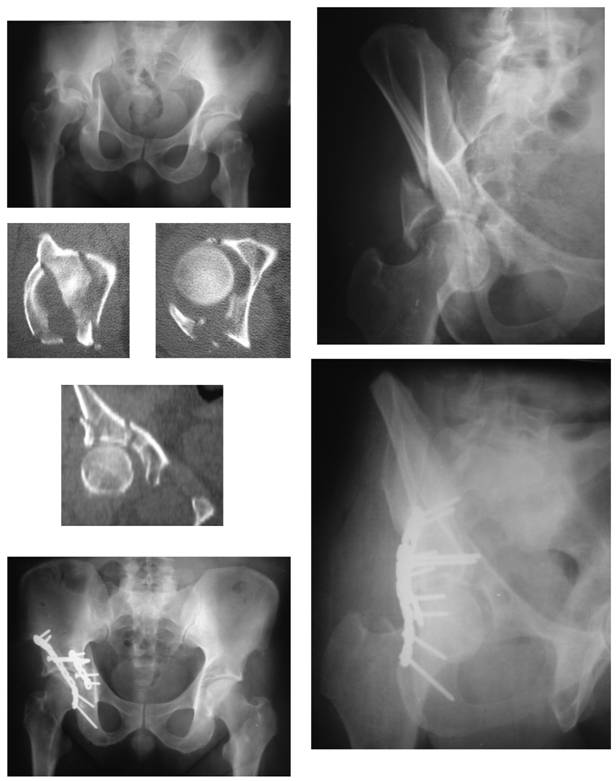
_moved.jpg)
Iatrogenic nerve injury occurred in 12 patients (8.9%).Ħ7 patients (67.7%) could be followed after a mean of 42.7 months. Postoperatively the hip joint was congruent in 90.3% with anatomical or near-anatomical joint reconstruction in > 90%. The mean operative time was 190 minutes with a blood loss of 855 ml. The Kocher-Langenbeck approach was used in > 90% for stabilization with a combination of plate and screw fixation in 71.1%. Osteosynthesis was performed 9.9 days after trauma. 20.2% of patients received a fracture related preoperative nerve injury to the sciatic nerve. An acetabular roof comminution was present in 16.3%. 87.5% of the patients showed a femoral head dislocation. The mean articular fracture displacement was 13.5 mm. The majority of patients showed a juxta- or transtectal fracture line. A high energy trauma was the trauma mechanism in 94.2%. The mean age was 35 years, and > 75% of these patients were male.


The analysis of 104 surgically treated patients with associated transverse and posterior wall fractures showed that more than half of these patients had associated injuries. To asses the risk of these concommitant bone injuries on early joint failure despite a high rate of postoperative congruency. PURPOUSE OF THE STUDY: Associated transverse and posterior wall fractures account for approximately 20% of all acetabular fractures.


 0 kommentar(er)
0 kommentar(er)
